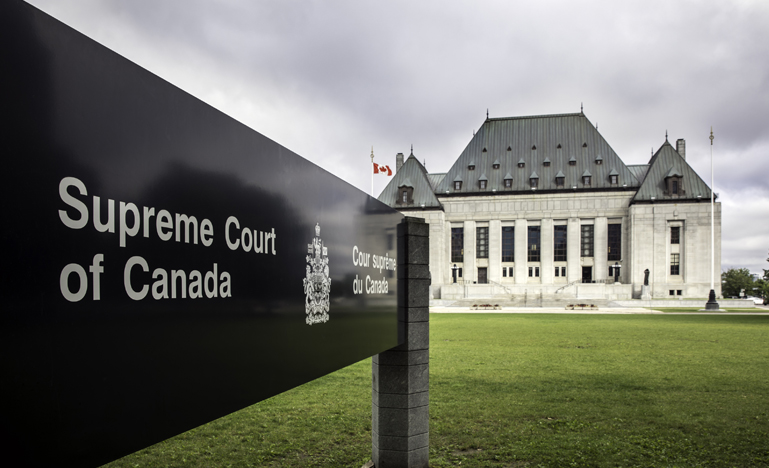Appealing interventions
Some clarifications and advice from Justice Suzanne Côté on how to provide useful written and oral arguments that complete the main parties’ submissions.

Over the years, the participation of interveners has become an established part of the Supreme Court of Canada’s hearing process. Their main role is to assist the court by providing additional perspective on any issues not brought by the main parties. Indeed, issues in an appeal often have an impact that reaches beyond the interest of the parties. Less clear, however, is what the court’s expectations are of the interveners in making submissions. In a recent CBA Fall Law Series session, Supreme Court Justice Suzanne Côté offered some clarifications to help provide useful written and oral arguments that complete the main parties’ submissions. Her remarks followed a court-issued Notice to the Profession in November 2021, which is to be read in conjunction with its March 2017 Notice on Interventions.
“Currently, the most controversial aspect of interventions is the time allotted for the oral argument,” said Madame Justice Côté. The 2017 Notice stated that, as a general rule, each intervener would be allotted five minutes, with few exceptions, and the motion judge retains discretion to allot time other than five minutes. Prior to that, not all interveners were given speaking time and the time allotted could vary.
Interveners with party status in the lower court are generally given 10 minutes for oral arguments, and the default rule is five minutes for the other interveners. The proposed intervener can certainly set out in the leave motion reasons why extra time would be warranted, although the court has not received many such requests, said Justice Côté. An intervener interrupted by the court during the allotted five minutes can ask the presiding Justice for additional time. “They are very open to give extra time when essentially your five minutes have been taken by the bench with their questions.”
The session’s moderator, Joshua Sealy-Harrington of Power Law, who is also an assistant professor at the Lincoln Alexander School of Law, said that the two notices to the profession provide for three requirements for interventions. “One is the relevance to the issues; another is the usefulness to the court and a third is difference from the main parties’ submissions.”
Relevance is likely the easiest requirement to understand, said Justice Côté, but if the proposed submissions do not really relate to the issues that the court must decide, the leave to intervene will not be granted. When it comes to usefulness, “of course it is about a new perspective, but it has to be something that is not ably covered or totally covered by one of the parties to the case,” she said. As for difference from the main parties’ submissions, “you have to demonstrate if you want to intervene that you will bring something new.”
In motions for intervention, interveners must “identify the position, the intent to take on the questions before the court and to set out the submissions to be advanced, the relevance, why it will be useful to the court, and how different they are from those of other parties,” said Madame Justice Côté.
The motion judge reads all the motions, and the court considers how each proposed intervener differs from the others, including whose and which interests the proposed intervener seeks to address and how the proposed intervener intends to discuss the legal issue, said the Justice. “We don’t want to have 50 people repeat the same thing before us. It’s not going to be useful for anybody.” The submissions sometimes look similar but “if it’s defended by another type of group, that could be considered as a different perspective.”
Be concise in creating a compelling or persuasive factum, the Justice said. “As long as the factum respects the role of an intervener, is not adversarial, and does not take a position on the outcome of the appeal, the factum will have all the chances of being useful.” When there are many interveners, “you want your factum to be read, so it has to be interesting, and I would say punchy in order to be highly persuasive.” An intervener doesn’t need to file a draft factum with their leave materials, but it is useful and the motion judge will look at it.
The Justice advised interveners to create a condensed book of authorities. “Even if the condensed book is not referred to during the hearing, I would still recommend to prepare one because we find them quite useful when we draft our reasons.”
The November 2021 Notice says that interveners should not take a position on an appeal’s outcome, “in other words, to take a position on how the law should apply to the facts of the case,” said Madame Justice Côté. “So you can tell us your position on a question of law but not tell us that in this case based on the facts of this case, the results should be this.” Taking a position on the legal issue raised in the file “is precisely what we want to hear from an intervener.”
Justice Côté advised interveners to use the ten factum pages and five minutes of oral argument to focus on the law instead of the facts. “If you try to make what you call the strategic views of the facts, you will be told that you cannot get in that area. You’re there to discuss a legal issue, this is why you were granted leave to intervene.”
Since the court has already read an intervener’s factum before the oral argument, “it’s a waste of time for counsel just to repeat what is in their factum,” said the Justice. “The best interveners, I think, pick up on arguments presented at the hearing and address issues that might have troubled the court.”


